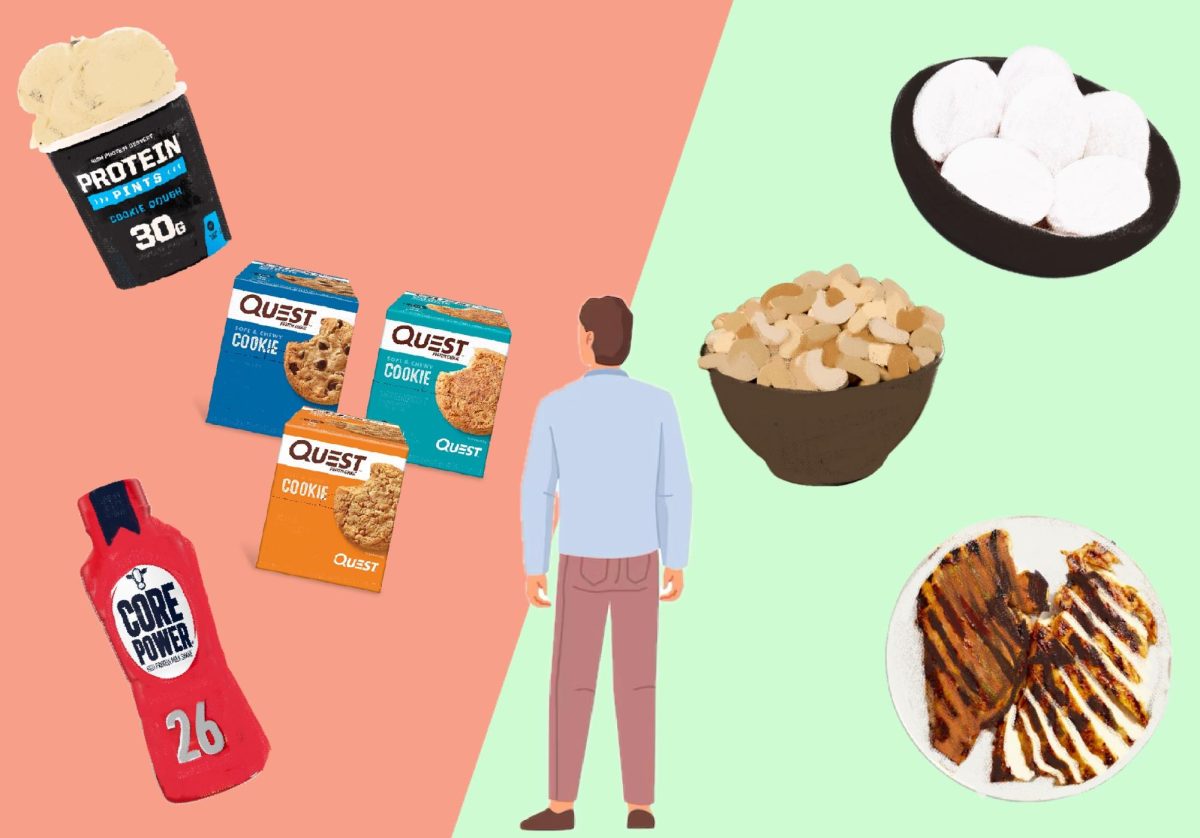
(Connor O'Brien / Heights Editor)
The first time I walked into the Rat, my eyes were drawn to Fairlife milk, with bold letters boasting “26 grams of Protein.” My initial reaction was—it’s milk! It’s a dairy product, full of healthy nutrients. Why are we talking about extra protein?
Fairlife milk isn’t the only time I’ve seen a food packaging advertise the amount of protein it contains. The Legendary Protein Cinnamon rolls also highlight their 20 grams of protein on the packaging. According to market research firm Mintel, the number of “protein” branded foods produced in 2024 doubled to 97 new products. Are Americans really not getting enough protein in their daily diets?
Back home in Europe, we love our protein—in the classic form of meat and vegetables. Of course, protein is an important part of our diet. It fuels us, and it’s delicious. But we don’t put extra protein in everything we eat, in glasses of milk or cookies. We just don’t think about it.
Coming from France, which is known for its gastronomy, definitely makes me more of a pessimist when it comes to American food. But all this added protein isn’t real food. It’s not nutritional, like eating a piece of chicken breast or chickpeas. This “protein” found in granola bars, cookies, and shakes is processed. Added protein can even ruin the taste of these so-called “healthy” snacks.
I may be exaggerating about France and Europe not consuming extra protein—we sell protein-enriched snacks, and Europeans do drink protein shakes. But the United States takes it several steps further. It turns into a marketing technique, a prime example of American consumerism at its finest.
When I asked my friend Grace about the obsession with protein, she replied, “So many foods are like eating air and chemicals! So you have to search for the snacks that have protein.” I understand that food in the United States may not be the most delicious, but is it even good for people to be eating chicken and two sides and a protein-packed cliff bar?
Another student claimed “it’s healthier” to eat a protein-rich diet, especially if you are exercising a lot. After all, protein helps enhance muscles, strengthens bones, and gives you energy. This obsession, however, has gone beyond athletes and become an all-American consumption. The American mindset is that this much protein is healthy, and I don’t know if it’s true. But I’m not a nutritionist—I’m simply observing the trends. Thank you to apps like TikTok for making a protein-bar diet mainstream.
A few weeks ago, I was scrolling on TikTok, and an account called Ballerina Farm popped up on my “For You” page. It was advertising the launch of protein flour. This shocked me. Flour is used to make bread and cake. Why should it include protein?
Many Americans are obsessed with protein because social media has convinced them that it’s healthy. According to PBS, 50 percent of Americans consume more than the recommended daily protein intake. While some people believe that a high-protein or low-carb diet can benefit their health, your food choices depend on your own lifestyle and needs. In reality, consuming that much protein in one day is neither healthy nor necessary, unless you are exercising intensely or pregnant.
Europe hasn’t yet reached America’s consumerism level. American snack companies are milking the trend of “healthy-diet” and protein to increase consumption. Here, the key difference between France and the U.S. is that France values gastronomy too much to add supplemental protein for “health benefits.” We already eat too much bread and butter.
Yes, eating is about fueling your body, but it should also bring pleasure. For me, food triggers memories. It reminds me of traditions, my childhood, or a distant place. A peach, for example, will always make me think of the summer at my grandma’s house. Food is a form of expression and art—it’s a way to discover different cultures. Traditional meals depict local produce and flavors. Adding all of this protein to foods can ruin the balance of flavors. It doesn’t depict cultures—it just makes things taste chalky.